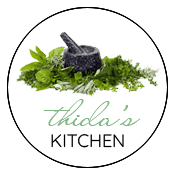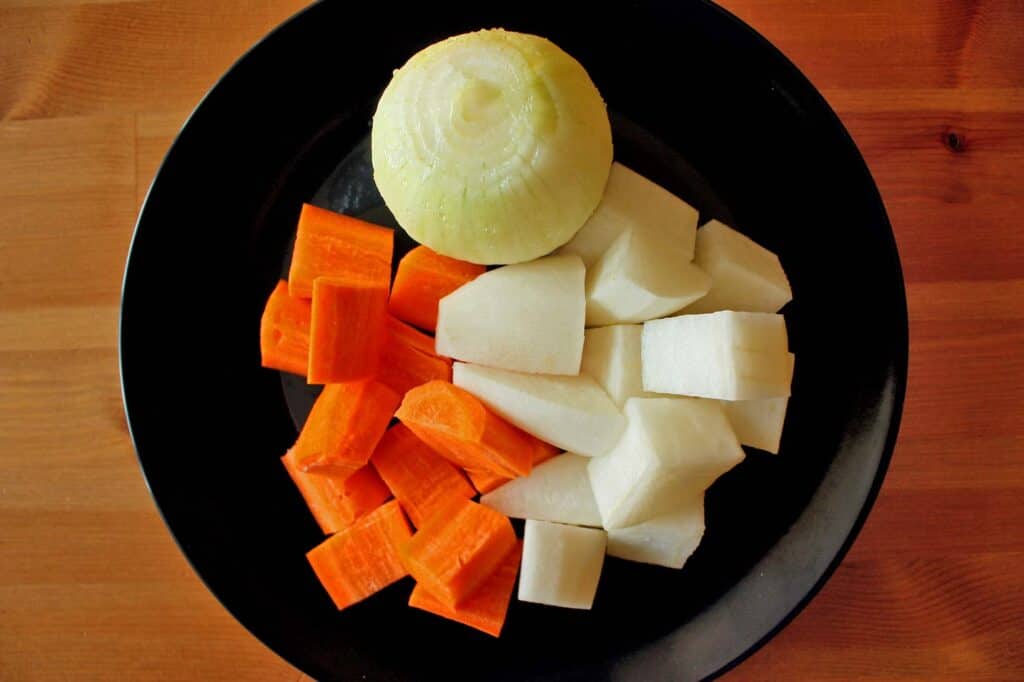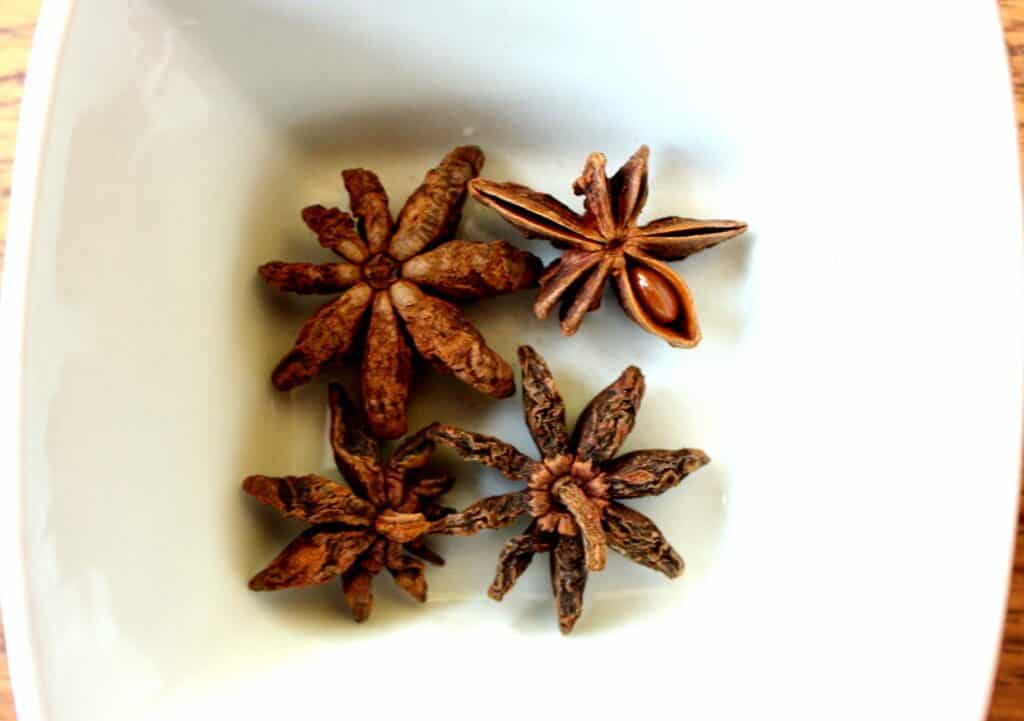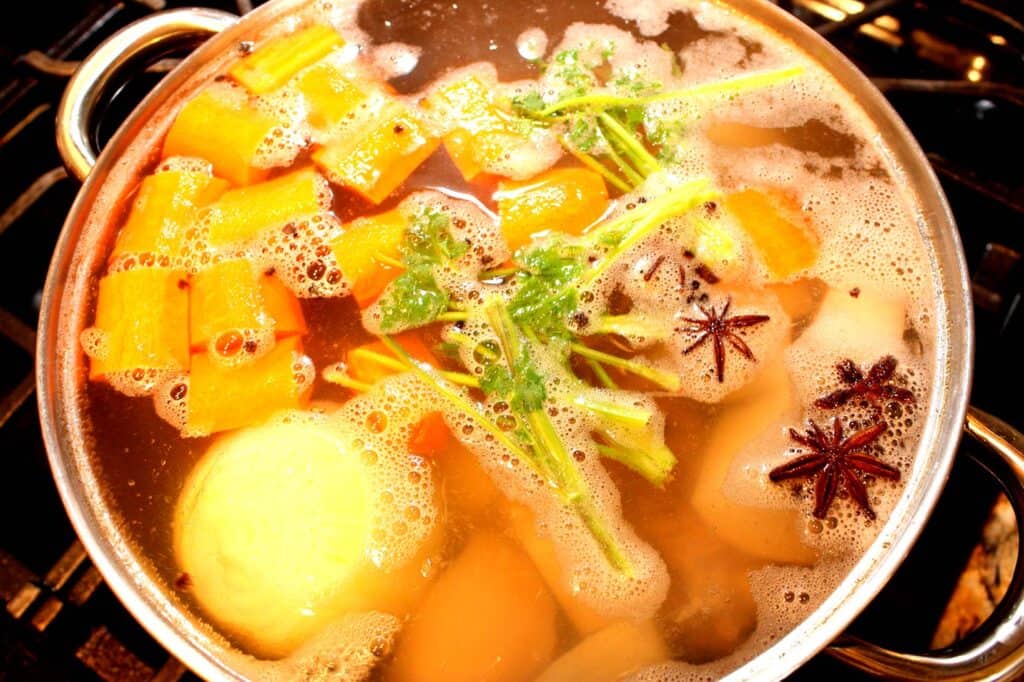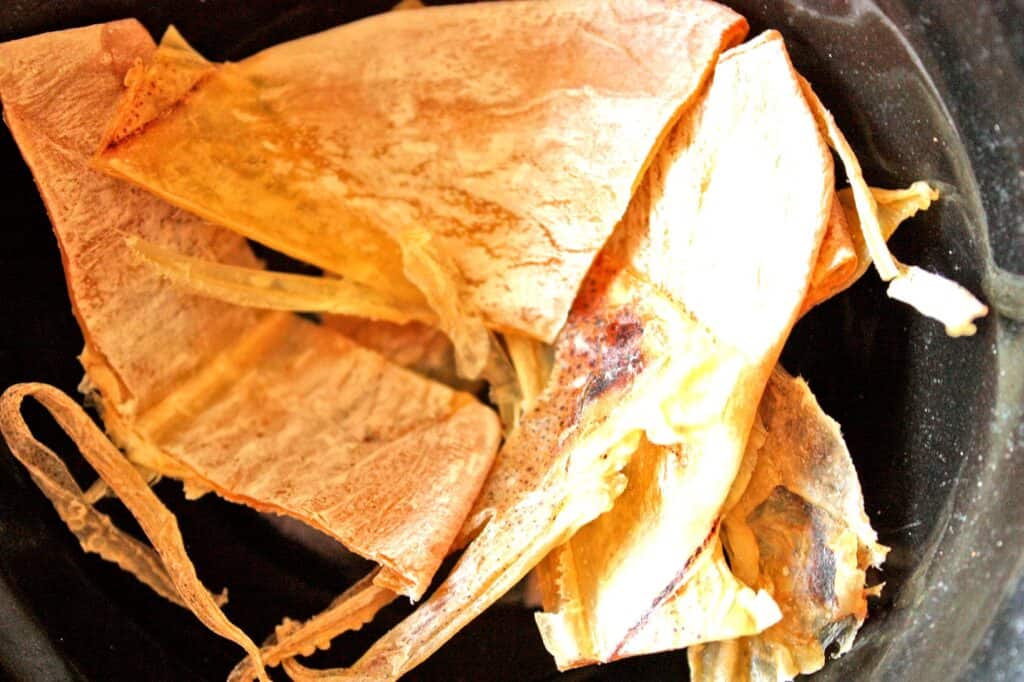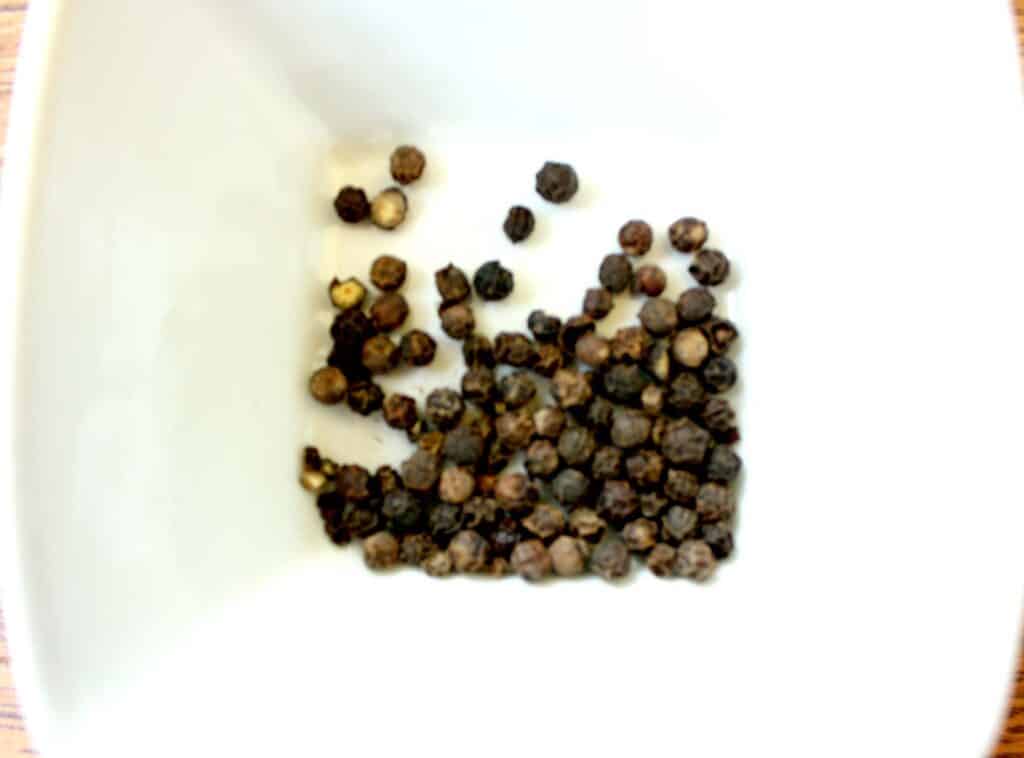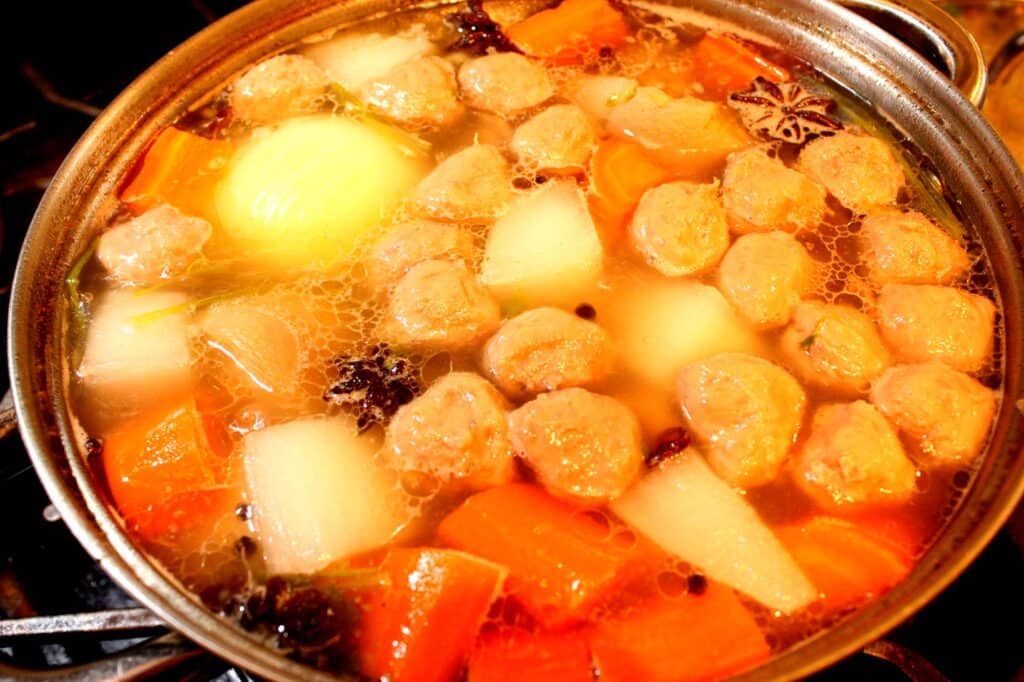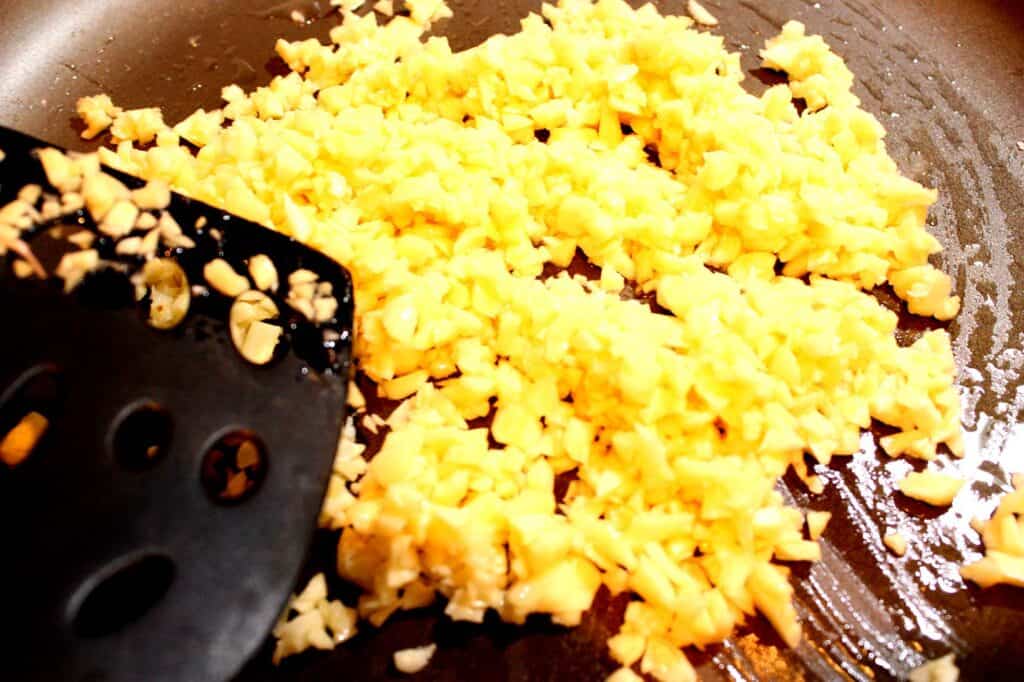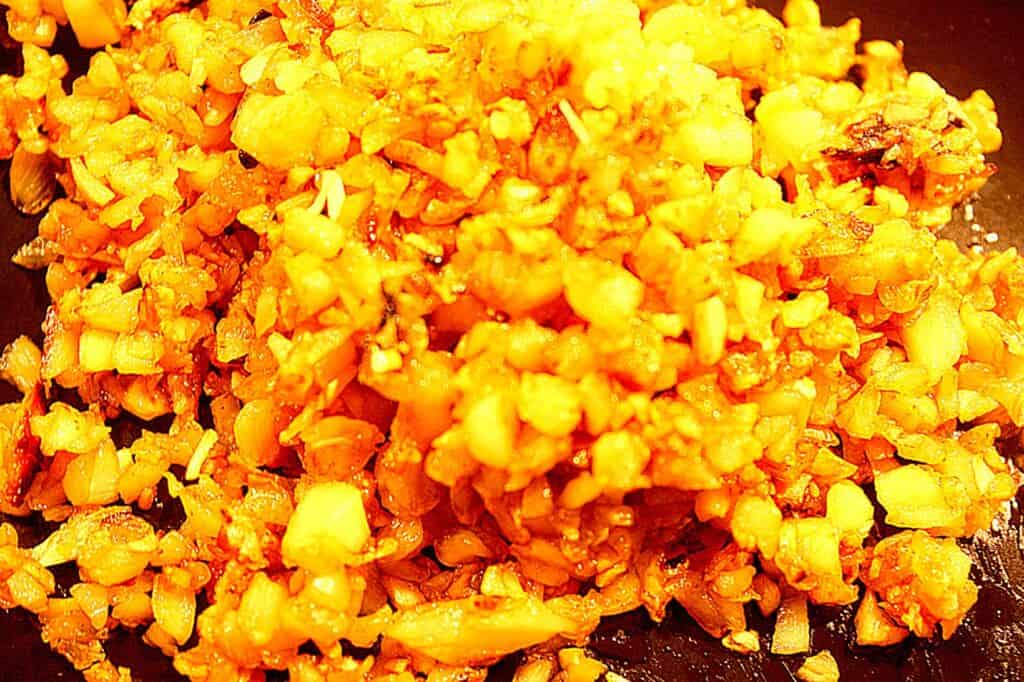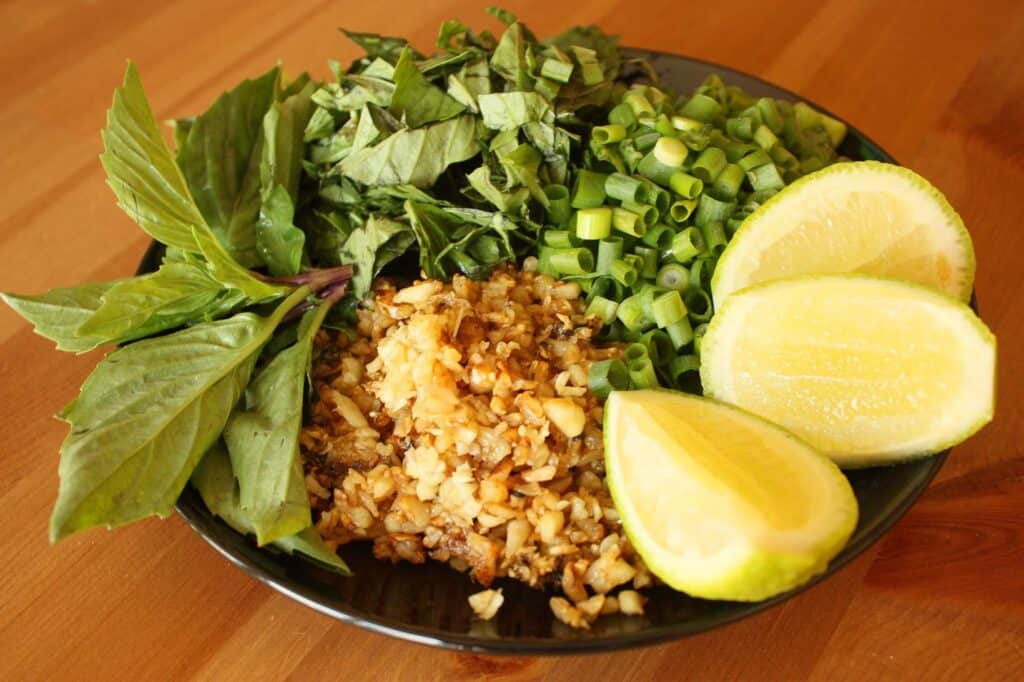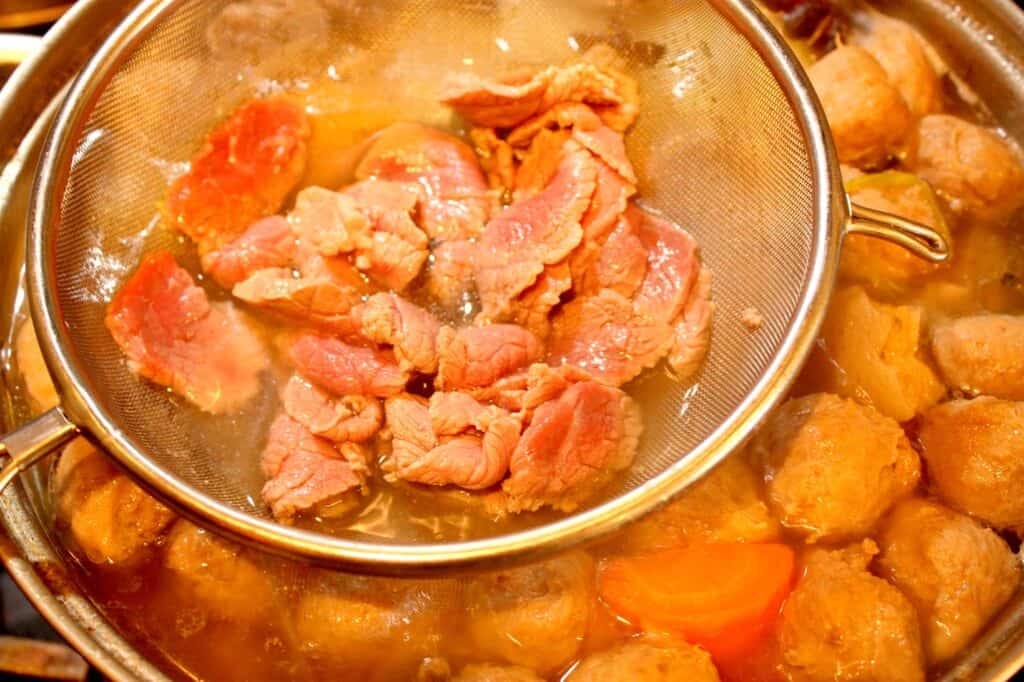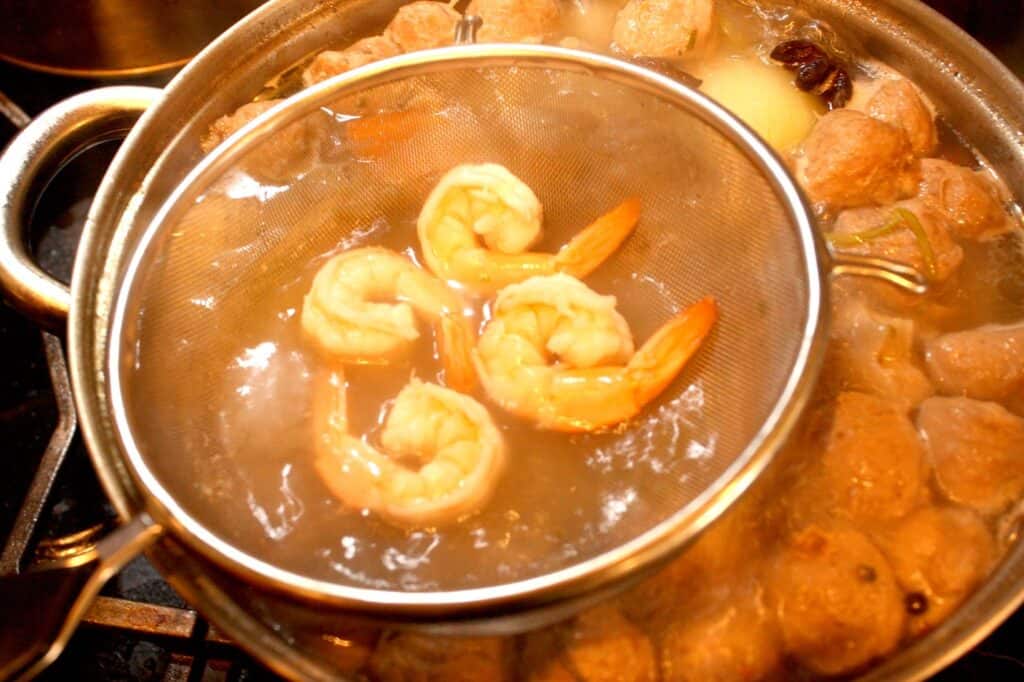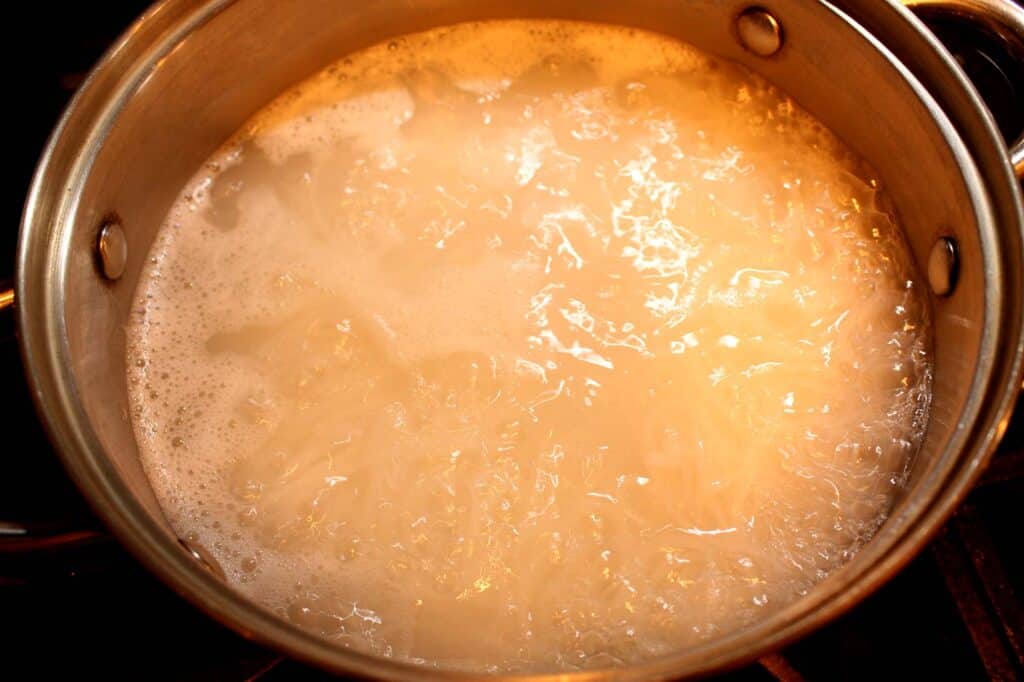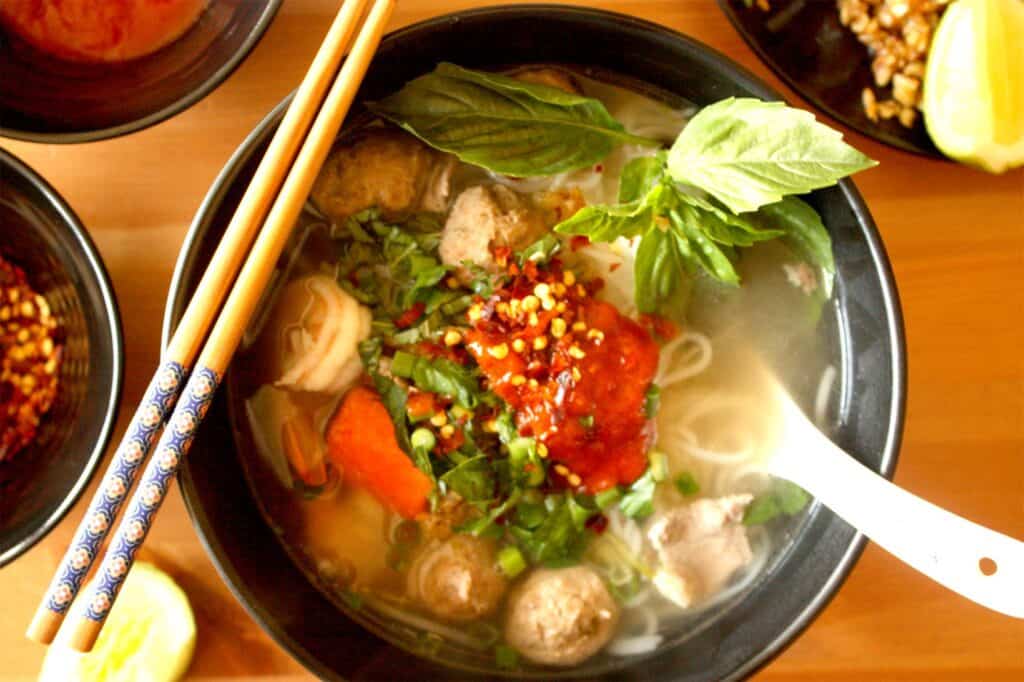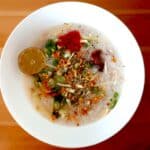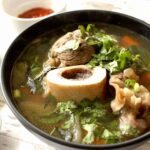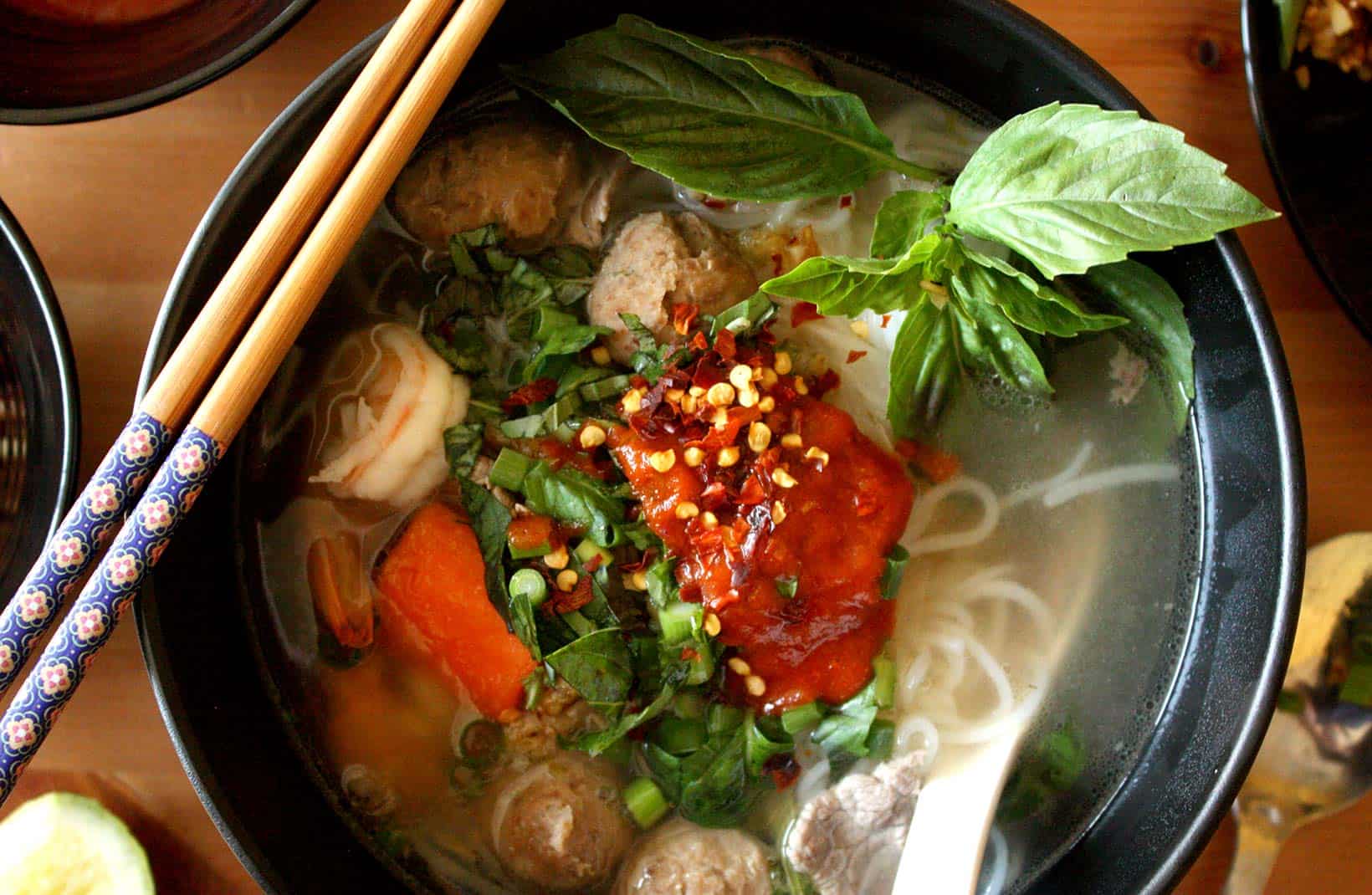
Kuy Teav is a pork bone noodle soup and a breakfast favorite in Cambodia. The soup is regarded widely as the Cambodian answer to its world-renowned Vietnamese cousin, Pho. And, like pho, it takes lots of time, patience, and getting the right ingredients to cook the perfect broth. So, after moving to Canada, it took me several months and many attempts to recreate the iconic breakfast dish — and I’m happy to say that the recipe I’m sharing below is quite close in taste and aroma to the kuy teav I so loved back in Cambodia.
While its cousin Pho has found a place in the hearts and menus around the world, Kuy Teav—often known as “Phnom Penh noodles” beyond Cambodia’s borders—remains a rare find, making it a sought-after experience for foodies. Our recipe brings this elusive dish into your home kitchen, guiding you through a simplified process for a taste that’s well worth the effort. Cook the soup in abundance, store for later (you can refrigerate or freeze it!), and enjoy its rich, comforting flavors whenever you’re craving a hot bowl of soup.
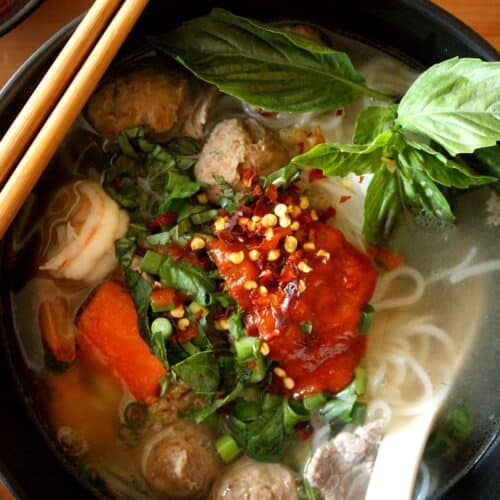
Kuy Teav Noodle Soup
Equipment
- 1 3-quart pot
- 1 6-quart pot
- 1 Strainer scooper
- 1 Colander
- 1 Butcher knife
Ingredients
Phnom Penh Noodle Soup Ingredients
- 2 pounds Pork bone
- 1 Dried squid medium sized
- 1 Carrot large
- 1 Daikon radish large
- 1 White onion
- 4
Anise star (affiliate link) - 5 Coriander stems
- ½ tablespoon
Kampot peppercorn (affiliate link) - 1 tablespoon Vegetable seasoning
- ½ tablespoon Sugar
- ½ tablespoon
MSG (affiliate link) - 1 ½ tablespoon Salt
- ½ pound Beef balls
- 1 ½ pound
Kuy teav noodles (affiliate link)
Kuy Teav Phnom Penh Toppings Ingredients
- 12 Shrimp deveined
- ¾ pounds Beef
- 2 stalks Thai basil
- 4 stalks Green onions
- 12 cloves Garlic
- 6 cups Bean sprouts
Chilli flakes (affiliate link) to taste - Sriracha sauce to taste
Fish sauce (affiliate link) to taste- Lime juice to taste
- Sugar to taste
Alternative Topping Ingredients
- Pork blood to taste
- Pork intestines to taste
- Rice wine vinegar to taste (instead of lime wedges)
Soy sauce (affiliate link) to taste (instead of fish sauce or salt)- Honey to taste (instead of sugar)
Instructions
Noodle Soup Preparation Instructions
- Wash and place the pork bones into a 3/4 full 3-quart pot of water, set to boil.
- Let the pork bones boil for 5 minutes, then remove from heat, discard the water, and wash the bones under warm water to remove all the gunk.
- Once washed, place the pork bones into a 6-quart pot that's 3/4 full with water and set to boil on high heat. You can prepare and add the other broth ingredients while the pork bone boils to save time.
- Clean and chop the carrot and daikon radish into 1-inch pieces and add to the broth.

- Peel the onion and add to the broth, whole.
- Add the star anise to the broth.

- Cut the stems from a bunch of cilantro, rinse them, then add them to the broth.

- Cut the dried squid into 1-inch wide slices and add to the broth.

- Place the black peppercorns in the Kuy Teav broth.

- Add salt, vegetable seasoning, MSG, and sugar to the broth.
- Reduce the heat to medium-low and allow the broth to simmer for 1 hour.
- Once the broth has been simmering for an hour, add the meatballs to the soup and allow them to boil for another 15 minutes, then turn off the heat.

Kuy Teav Toppings Preparation Instructions
- Peel the garlic, crush it with the flat side of a butcher knife, then mince it finely.
- On a large skillet, heat half a tablespoon of cooking oil over medium heat.
- Once the oil is hot, add the garlic and stir continuously for 5 minutes or until the garlic turns a golden-brown.

- Remove the garlic from the frying pan and set aside.

- Chop the Thai basil, green onions, and limes, and set aside with the fried garlic.

- Slice the beef into thin pieces, then place the meat into the boiling broth with a strainer scoop, and allow it to boil for 3 minutes (or less, if you prefer the beef rare). Then, pull the meat out and set aside.

- Devein the shrimp and remove the heads, place into the strainer scoop, then immerse in the boiling Kuy Teav broth. Allow the shimp to boil for 10 minutes, then remove and set aside.

- Boil half a 3-quart pot of water over high heat, then add the noodles to the boiling water and reduce the heat to medium.
- Let the noodles boil for 5 minutes while stirring them often.

- Strain the noodles with a colander and set aside.
Instructions for Serving Phnom Penh Noodles
- In a soup bowl, place 1 cup of bean sprouts.
- Divide the noodles into 6 portions, then place a single portion into the bowl over the bean sprouts.
- Divide the beef into 6 servings, then place one portion on top of the noodles.
- Place 2 shrimps on top of the Kuy Teav noodles.
- Add the broth, including carrots, daikon, and some pork bone to the bowl — just enough to submerge the noodles (or up to your personal preference).
- Sprinkle the Thai basil, green onions, fried garlic, sriracha sauce, and chilli flakes on top of the soup.
- Add fish sauce,
juice from lime cheeks , and sugar as needed to make the noodle soup more savoury, acidic, or sweet.
Video

Notes
Nutrition
Kuy Teav origins
Kuy Teav originated in Cambodia and spread to neighboring nations, including Vietnam, Thailand, and Malaysia, where it’s ubiquitous in restaurants and street food stalls. While the soup’s recipe differs among these countries, the roots can be traced back to the original Cambodian breakfast noodle soup. In fact, Cambodia’s Ministry of Commerce recognized the dish as a collective mark (also known as a “trade mark”), to identify Kuy Teav’s Cambodian origin and establish a level of quality for the dish.
How kuy teav got its name
The term “Kuy Teav” originated from the Chaozhou (also known as Teochew) Chinese word gue diao. This Chinese word refers to both the type of rice noodles used in the soup, and the type of noodle soup that includes various meats and vegetable toppings. In Cambodia, this noodle soup is now known as Kuy Teav Phnom Penh. Meanwhile, in Vietnam, the equivalent noodle soup dish is known as Hu Tieu Nam Vang; in Thailand, a similar soup is called Kuai Tiao; in Malaysia, Kway Teow is the name of a comparable noodle soup. Elsewhere in the world, Kuy Teav Phnom Penh may be referred to simply as Phnom Penh noodles.
What’s the difference between pho and hu tieu?
The difference between pho and hu tieu (also known as Kuy Teav) is in the noodles and the type of meat used in the broth. Pho noodles are wider than those used in hu tieu. At the same time, the pho and hu tieu broths are based on different proteins. Whereas the pho broth is made with beef bones, hu tieu is cooked using pork bones. Likewise, while pho generally includes various cuts of beef, hu tieu may be served with beef, shrimp, pork blood, pork intestines, any or all of the above.
Parting Words
This kuy teav recipe make take a while to prepare, but we hope that your patience will reward you with a delicious, memorable dish. Have you made kuy teav with this recipe (or any other recipe) yet? How did the soup turn out? Is there anything you’d change in our instructions or ingredients? Please share your thoughts with us in the comments section.
